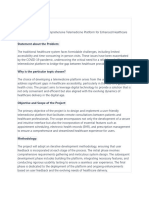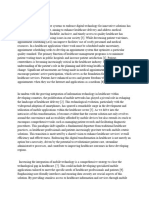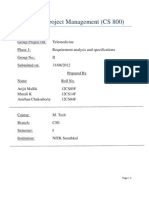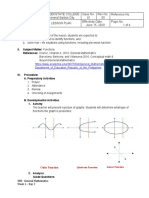0% found this document useful (0 votes)
25 views4 pagesTele Task
A U.S. clinic with five locations aims to implement a telehealth software solution to improve patient intake, scheduling, and telemedicine services. The global telehealth market is projected to grow significantly, highlighting the importance of features like real-time communication and remote monitoring, while addressing challenges such as integration and data security. The proposed solution includes functionalities for patient registration, appointment management, secure consultations, and clinical documentation, ultimately enhancing access to care and operational efficiency.
Uploaded by
Rahul SharmaCopyright
© © All Rights Reserved
We take content rights seriously. If you suspect this is your content, claim it here.
Available Formats
Download as PDF, TXT or read online on Scribd
0% found this document useful (0 votes)
25 views4 pagesTele Task
A U.S. clinic with five locations aims to implement a telehealth software solution to improve patient intake, scheduling, and telemedicine services. The global telehealth market is projected to grow significantly, highlighting the importance of features like real-time communication and remote monitoring, while addressing challenges such as integration and data security. The proposed solution includes functionalities for patient registration, appointment management, secure consultations, and clinical documentation, ultimately enhancing access to care and operational efficiency.
Uploaded by
Rahul SharmaCopyright
© © All Rights Reserved
We take content rights seriously. If you suspect this is your content, claim it here.
Available Formats
Download as PDF, TXT or read online on Scribd
/ 4






















































































